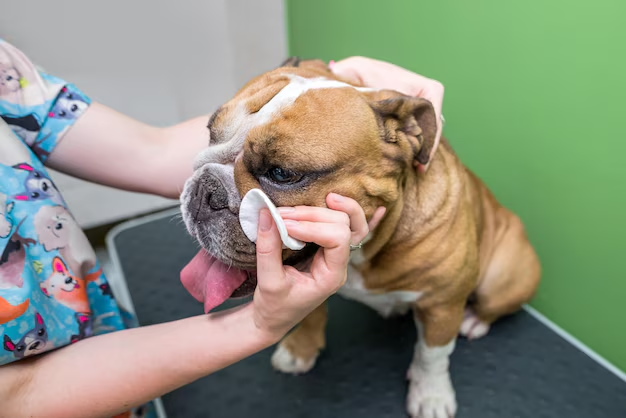Protecting Your Dog’s Eyesight: Essential Tips to Prevent Cataracts
When it comes to the health and happiness of our furry companions, their eyesight is often overlooked until problems arise. Cataracts in dogs can lead to significant vision impairment and affect their quality of life. Understanding how to prevent this common condition is crucial for any responsible pet owner. This guide will walk you through practical steps and important considerations to minimize the risk of cataracts in your dog, ensuring they enjoy a clearer, brighter future.
Understanding Cataracts in Dogs
Cataracts occur when the lens of the eye becomes clouded, impairing vision. This condition is not only prevalent in humans but also in our canine friends. Though it can afflict dogs of any age, older dogs are more susceptible. Various factors can contribute to the development of cataracts, including genetics, diabetes, and eye injuries. Understanding these risk factors is the first step in safeguarding your pet's vision.
Key Causes of Cataracts in Dogs
- Genetics: Some dog breeds are more prone to cataracts due to their genetic makeup. Breeds like Cocker Spaniels, Poodles, and Siberian Huskies are examples.
- Diabetes: Dogs with diabetes are at an increased risk for developing cataracts. Monitoring your dog’s health can help manage this risk.
- Eye Injuries: Trauma to the eye can lead to cataract formation, which emphasizes the importance of protecting your dog's eyes.
- Aging: As dogs age, their risk for cataracts naturally increases.
- Infections and Nutritional Deficiencies: Certain infections and lack of essential nutrients can also contribute to the formation of cataracts.
Steps to Prevent Cataracts in Dogs
Preventing cataracts involves a multifaceted approach. Here's how you can actively participate in your dog's eye health journey.
1. Regular Veterinary Check-Ups 🏥
Routine check-ups are vital. Regular visits to the vet can help identify the early signs of cataracts or any underlying conditions predisposing your dog to eye problems.
- Schedule annual wellness exams for adult dogs.
- Increase the frequency of visits for senior dogs or breeds known to be at risk.
2. Manage Underlying Conditions
Conditions such as diabetes must be managed effectively. Control your dog's sugar levels and follow your vet's dietary and medication guidelines.
- Diet Adjustments: Make sure your dog is on a balanced diet that supports overall health.
- Exercise: Encourage regular physical activities to maintain a healthy weight and prevent diabetes-related complications.
3. Protect Their Eyes from Injury
Prevent trauma by ensuring your dog's environment is safe. Be mindful of:
- Sharp objects or hazardous materials when at home or outdoors.
- High-speed activities with other animals, which could lead to accidental injuries.
4. Nutritional Support 🍏
A well-balanced diet rich in antioxidants can promote eye health and reduce the risk of cataracts.
- Vitamins C and E: Consider foods or supplements that offer these antioxidants.
- Omega-3 Fatty Acids: These have been observed to support eye health.
5. Genetic Screening for Puppies
If you are selecting a puppy, particularly from breeds prone to cataracts, request genetic testing. This can help identify the likelihood of future cataract development.
Recognizing Early Signs of Cataracts
Awareness is key. Knowing the early symptoms of cataracts can lead to earlier management and better outcomes for your dog.
- Cloudy Eyes: Look for any opacity or whitening in your dog's eyes.
- Behavioral Changes: Difficulty navigating familiar spaces or hesitation due to vision changes.
- Eye Redness or Irritation: Persistent redness could indicate other eye issues that might lead to cataracts.
Practical Tips to Ensure Healthy Eyes
To summarize, here’s a handy list of actions you can take to keep your dog's eyes healthy and cataract-free:
- 👩⚕️ Vet Visits: Regular check-ups and eye examinations.
- 🏃♂️ Exercise: Maintain a consistent physical activity routine.
- 🥗 Diet: Offer nutrient-dense foods and supplements.
- 🕶️ Safety: Use protective measures to avoid eye injuries.
- 🔍 Observe: Monitor and note any changes in your dog’s behavior or appearance.
Empowering Your Dog's Vision for the Future
Preventing cataracts is about proactive care. By incorporating these preventive measures into your routine, you can significantly lower the chances of your canine companion developing cataracts. Remember, early action and consistent care form the bedrock of healthy eyes. Watch for early signs, maintain regular vet visits, and ensure a nourishing diet to give your dog the gift of sight for years to come.
By staying informed and vigilant, you ensure that your dog leads a fulfilled life, filled with the vibrant colors and sights of the world they explore.
